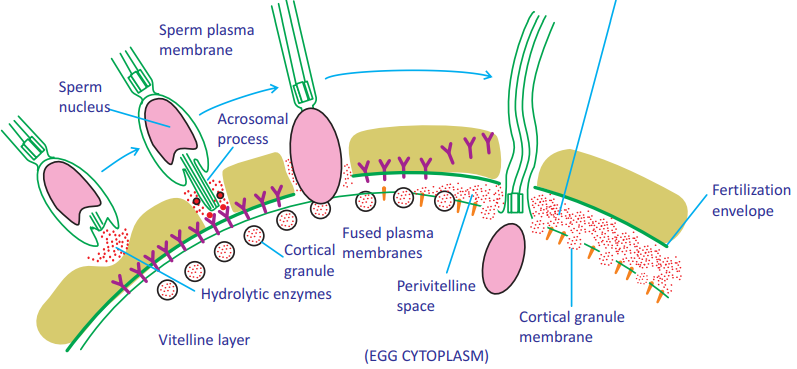Table of Contents
Introduction
- Cortical granule reaction is the process by which the contents of the cortical granules are released into the cytoplasm of the egg cell upon fertilization.
Role of Calcium in Initiating the Cortical Granule Reaction
- Upon fertilization, the concentration of free calcium ions (Ca2+) in the egg cytoplasm increases greatly.
- This high-calcium environment triggers the cortical granule membranes to fuse with the egg cell membrane and release their contents.
- A wave of cortical granule exocytosis then propagates around the cortex to the opposite side of the egg.
- The rise in Ca2+ concentration is not due to an influx of calcium into the egg, but comes from within the egg itself, stored in the endoplasmic reticulum.
- Experiments have shown that Ca2+ is directly responsible for propagating the cortical granule reaction, and the release of Ca2+ is self-propagating.
- The drug A23187 is a calcium ionophore that can initiate the cortical granule reaction by allowing the diffusion of calcium ions across lipid membranes.
Visualizing Calcium Release
- Calcium release from intracellular storage can be monitored visually using calcium-activated luminescent or fluorescent dyes.
- When a sea urchin egg is injected with these dyes and fertilized, a wave of calcium release propagates across the egg, which is visualized as a band of light.
Conclusion
- The cortical granule reaction is initiated by the increase in Ca2+ concentration in the egg cytoplasm upon fertilization.
- The rise in Ca2+ concentration is stored within the egg in the endoplasmic reticulum, and the release of Ca2+ is self-propagating.
- The cortical granule reaction is a crucial process that helps to prevent polyspermy, the fertilization of an egg by multiple sperm, by forming a physical barrier around the egg that prevents the entry of additional sperm.
